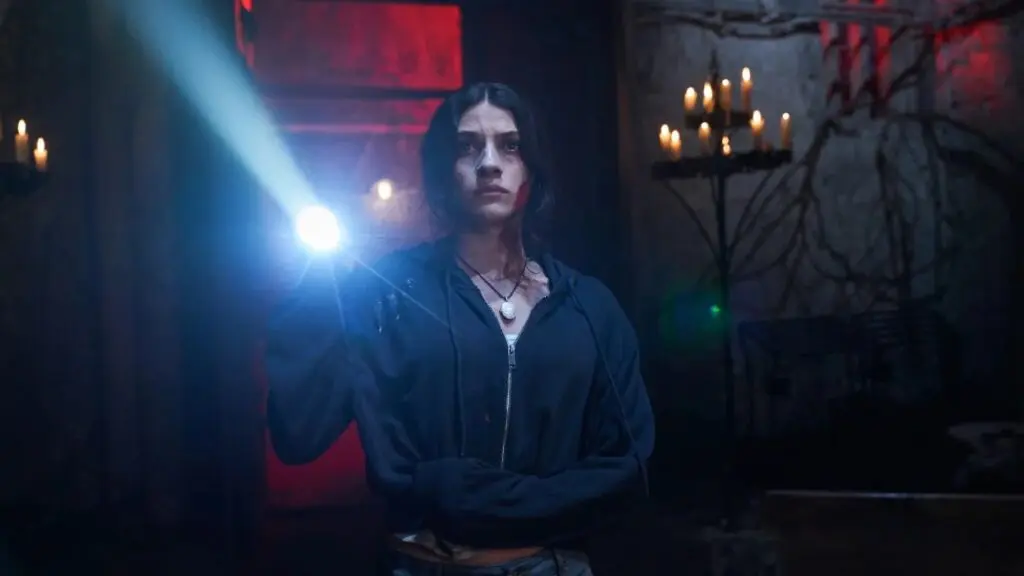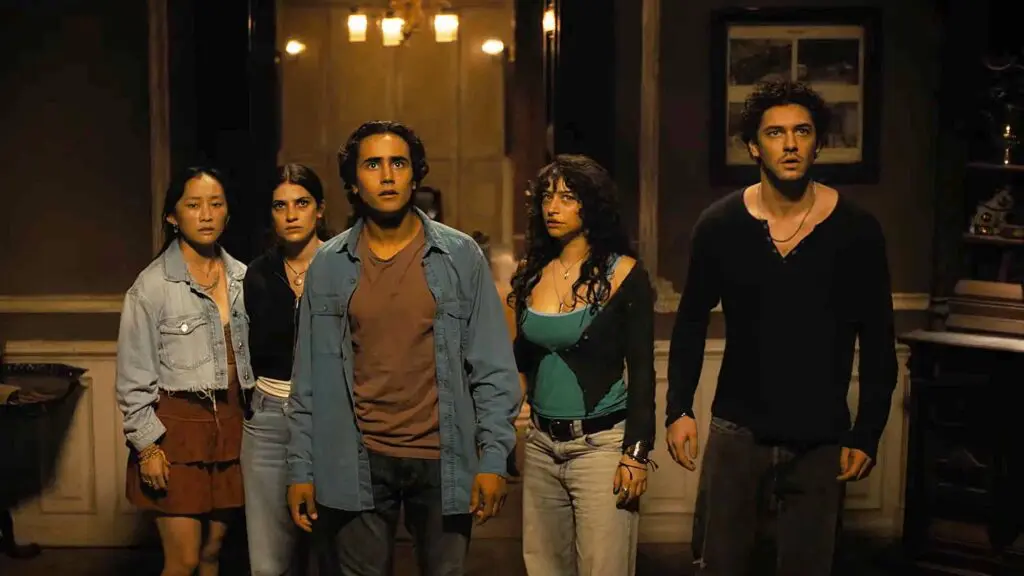
The best way to adapt a video game in live-action – animation is a different kettle of fish, as proved by Castlevania, Arcane, and most recently Devil May Cry – is probably to ignore the game almost entirely. Just look at The Last of Us, which across two seasons has developed a weird kind of Uncanny Valley effect by being faithful enough to be very recognisable but different enough in the details to be disconcerting. Until Dawn, an adaptation of another PlayStation title, doesn’t have this problem because it uses the game as a jumping-off point for a completely unrelated story that incorporates a small handful of familiar iconography and ideas but otherwise has nothing to do with the original story at all.
And this is a smart decision. The game was a choice-driven narrative adventure that deliberately played up the cliches of slasher horror before eventually pivoting into creature feature territory without much warning, but its essential appeal was that it put the dumb decision-making of genre archetypes in the player’s hands. All those claims of “I’d survive this,” or “I’d never do that,” were put to the test. It was a good time, but almost nothing about it would translate to a decent movie, which is why almost nothing about it has been transplanted across in this David F. Sandberg redo.
Don’t get me wrong, some of the constituent parts are present. Until Dawn begins with that age-old slasher trope of a group of teens stopping off at a gas station where a creepy clerk warns them of horrors ahead. But that clerk is here played by Peter Stormare (Twilight of the Gods), who is in the game as the same character, Dr. Alan J. Hill. It’s one of the only true bits of direct connectivity. Everything else is similar but a bit different – the final girl, Clover (Ella Rubin, Fear Street: Prom Queen), is heading to the ropey cabin in the woods in the hope of finding her missing, presumed-dead sister, Melanie (Maia Mitchell, Sitting in Bars With Cake, The Last Summer, Never Goin’ Back), which is kind of similar to the game’s premise, which sees Rami Malek’s character inviting a group of teens to his family’s lodge in the mountains, where his sisters were killed a year prior.

But this group has nothing to do with that one (the opportunity for a killer Hayden Panettiere cameo is sadly missed; and yes, the game had a better cast than the movie). Clover’s dragging around Max (Michael Cimino, Never Have I Ever, Love, Victor), her kind of puppy dog number one fan, her friend Nina (Odessa A’zion) and Nina’s new-ish boyfriend Abe (Belmont Cameli, Along for the Ride), and the group’s self-professed psychic, Megan (Ji-young Yoo, Sweet Home). Every character is thin and their dynamics are under-explored, which isn’t as much of a criticism as you’d think since it’s a pretty fundamental component of the slasher genre in general.

Ella Rubin in Until Dawn | Image via Sony Pictures Entertainment
The key flourish of Until Dawn is a Groundhog Day-style time loop gimmick. With the gang trapped in the lodge, they’re forced to repeatedly endure a horrendous night of violence in an effort to survive until dawn – geddit? – and hopefully figure out what’s going on, but each night introduces radically new threats and flavours of horror. Like the game, it starts out as a pure slasher. Then it quickly lurches into supernatural haunted-house territory, with possessions and witches, then shifts again and indeed again, eventually introducing the game’s Wendigo threat but as a stripped-down version with a new explanatory backstory.
This is all smart for a few reasons. One is that it keeps the audience on their toes. Like the characters, they can never quite tell what’s coming next, so each night’s gimmick is a fun surprise. And it’s clearly intended to be fun above all else. The movie’s chock-full of jump scares and gnarly gore, but it never really asks you to take any of it all that seriously – some of it, in fact, is explicitly played for laughs.
The other upside is that the almost anthological premise allows Sandberg a lot of formal leeway, so you get an excuse for a really fun found-footage compilation, for instance, that couldn’t exist in a more conventional movie. It isn’t high art, let’s be clear, and the entire point is to play with very broad and familiar genre concepts, so nothing’s strictly new. But the combination of so many well-worn elements in this particular composition helps to alleviate the drudgery of a movie that has one core style and expects you to pretend like you’re seeing all its tricks for the first time. Sandberg can do that – he did it in Annabelle: Creation, for example – but the elasticity of this premise was clearly a major selling point for him and the cast, who all rise to the challenge of selling the weirdness and unpredictability of the evening.
Towards the end, it all, admittedly, starts to fall apart a little. The explanations for why what’s happening is actually happening don’t stand up to even cursory examination, and the fresh reset gimmick ends up being dropped for a more straightforward race to the finish. Even that has its highlights, but they’re notably lesser than the movie’s schlocky and surprising middle, which is where it’s at its best. But in terms of live-action video game adaptations, which are almost always terrible, Until Dawn stands out as a fun little curio that tried to forge its own path – and almost succeeded.


